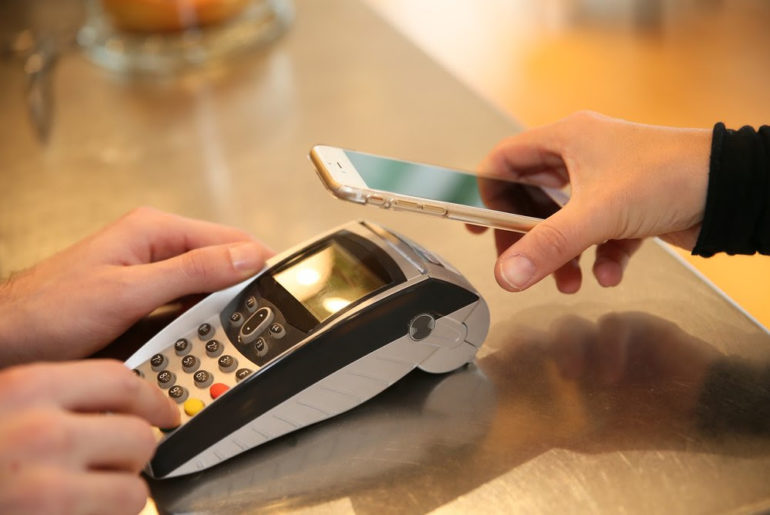fraud (n)
- wrongful or criminal deception intended to result in financial or personal gain.
- a person or thing intended to deceive others, typically by unjustifiably claiming or being credited with accomplishments or qualities.
E-Commerce is undeniably one of the biggest sectors in online business. As a sector that continues to blow up in size, volume and influence, it is no surprise that fraud still exists through the loopholes in the system.
Fraud in e-commerce has substantially increased globally over the last few years with the immense rise in online marketplaces. With more sophisticated technology available to fraudsters, it’s only become more difficult for e-commerce businesses to keep a track of the tactics used to defraud online businesses.
Whether you’re simply making a purchase or starting your own business, it’s essential to stay vigilant of the types of frauds that exist in the eCommerce industry. In this article, we’ll be covering the lifecycle of how frauds are performed and how to formulate a solution for the same. Let’s begin!
Related Read: Ecommerce Payment System?
Why does fraud take place?
Payment fraud has existed for a long time now, but what makes eCommerce fraud a cause for concern? What is the difference?
Well, the difference is simple. The latter mostly occurs remotely and the fraudster requires only the card information of the user to execute the ploy. Generally, fraudsters perform this to obtain a profit– to extract money, goods or sensitive information from the victim.
Hackers usually do one of the following things during/after the fraud:
- Try to scam goods from the deal
- (Mis)use the data themselves
- Sell it to cyberthieves, to make fraudulent transactions
According to Nilson Reports from 2015 and 2016, worldwide fraud:
- Has increased steadily every year since 1993
- Whopping 500% jump in online shopping fraud cases in just 3 years
- Online shopping frauds jumped 6-fold in just 2 years
The massive growth of the eCommerce industry, along with the increase in the use of cards for purchases since 2010 is directly linked to the increase in frauds in the same period.
On a broader scale, here’s why online fraud occurs as often as it does:
- It is fairly easy for hackers to steal the necessary data. For fraudsters, it is easy to buy this information on the black market
- Lack of clear set rules or prosecution for this type of crime
It has been increasingly hard to cement a set of rules until this point in time. Here’s why:
- It’s hard to detect online fraud and catch the correct fraudster. Online aliases have only made it harder than it is to find the imposter
- The police do not prioritize online fraud nearly as highly due to the fact that low amount of cases are reported
- Online fraud often crosses borders, which makes it harder to find a legal punishment.
Types of e-commerce fraud
- Chargeback fraud– In the case of chargeback fraud, a customer keeps the product purchased from the online store via credit card and claims a refund falsely on the grounds of payment being made twice or purchase never made in the first place.
- Identity theft– As the name suggests, this kind of fraud involves impersonation. The fraudster obtains the identification information of the actual user and makes the online purchase on the e-commerce platform. Identity theft affects both the customer as well as the seller as the customer can place a refund request as soon as he detects the fraud.
- Return fraud– In return fraud, the fraudster asks for a refund claiming that the product was never received, or requests a refund for a fake product already purchased and swapped with the actual product received. In refund fraud, the merchant suffers a loss of revenue due to the refund of the payment made as well as a loss of inventory when the fraudster returns a fake or faulty item.
- Credit card fraud– Credit card fraud may be committed when a person makes online purchases from either a stolen card or when the person has taken over the account of a genuine user.
- Merchant fraud– In merchant fraud, the fraudster creates a fake merchant account under the pretence of running a legitimate business. The fraudster uses multiple stolen credit/debit cards and withdraws the amount received before being detected or reported, and/or the transaction moving to the point of being reversed.
- Phishing– Phishing is a method to collect the personal information of a person like their user ID, password, and credit card information via an email or SMS. In phishing, the fraudsters send emails or SMS to the user by pretending as the actual online marketplace.
- Clean Fraud– In clean fraud, fraudsters use stolen payment card information to make an online purchase and uses technology to manipulate the transaction to prevent any chances of fraud detection. The fraudsters enter valid card information and escape easily without triggering any manual traps set for fraud prevention.
How do you spot a fraud?
As we mentioned earlier, it’s necessary to take the necessary precautions against a variety of scamsters online. If you’re running a business, here are a few things that are usually red-flags to indicate a scam. If you notice any of these patterns among your users, it’s recommended that you manually approve the orders placed:
- First-time customers: The easiest way to perform fraud is under the pretence of being new to the platform. With the increasing volume of fake aliases, fraudsters pretend to be new users to stay in the clear.
- Larger-than-average orders: Once you take a good look at the order history of the user, it can be easy to spot unusual activity like a sudden spike in the purchase value, strangely large quantities, etc.
- Cash-on-delivery orders: Cash-on-delivery orders are indisputably on top of the suspicious activity list when it comes to eCommerce. Most failed orders, refund requests, last-minute-cancellations, etc. arise from COD orders. It’s always recommended to monitor activity and check for patterns in these cases.
- Fast shipping: This applies to imposters who pose as fake merchants online. One of the common traits that they possess is the promise of unusually fast shipping. When you see unrealistic promises like that, take the time out to evaluate if it’s authentic.
- Incomplete address: This is one of the easiest ways to detect fraud where a ‘customer’ fills in an incomplete/suspicious address that can’t be fulfilled and proceeds to cancel it/request a refund for the same.
- Large quantities of the same product: Though this isn’t a definitive dealbreaker, this is definitely one of the red flags to consider while looking for fraudsters. A common pattern observed is an unusually large order for the same product.
- Shipping and billing address is not the same: Like an incomplete address, fraudsters generally employ different addresses for billing and shipping. Unless it’s an organization or institution, it’s generally fishy when individuals repeatedly provide different addresses for billing and shipping.
- Several cards used from the same IP address: Based on shopping trends, a regular shopper generally employs not more than 3-4 cards for purchase. When an unusually high amount of cards are registered from the same name or customer ID, it may signal a risky user.
- Many transactions in a short amount of time: In the finance world, one too many transactions squeezed into an abnormally short period of time is a cause for worry. If you see that happening, make sure to manually check for suspicious activity.
The impact
The real implication of e-commerce fraud is the cost incurred to the merchant. Every failed or retracted order causes a chargeback to the merchant. A chargeback is a sum that must be returned by the merchant to the cardholder after a fraudulent transaction.
However, successfully executing a chargeback can be expensive. Processing a chargeback includes operational costs such as transaction fees, legal fees, currency conversions, etc. This can mean potentially large losses for the merchant when an elaborate fraud is in question.
One other type is the fact that the merchant will not be able to resell the same product after it is cancelled and he will have to bear the losses. These types of losses are classified under Return-To-Origin or RTO.
Fortunately, there is a system in place that tracks and offers a solution for RTO fraud– Razorpay Thirdwatch.
Razorpay Thirdwatch is the first-of-its-kind fraud prevention solution in India meant for e-commerce businesses of all sizes. With its advanced Artificial Intelligence engine, coupled with Machine Learning, Thirdwatch helps merchants detect risky users, impulse purchases, fraudulent orders, etc.
But, what is the impact of Thirdwatch on business?
With Thirdwatch’s smart solution, merchants don’t have to shell out a ton of money in shipping costs! Double shipping costs for risky orders are one of the least-accounted for in the e-commerce industry and we’re here to save you from that.
Thirdwatch also helps you seamlessly communicate with your customers to double-check selected items. What’s better? You can even automate the process! Say goodbye to clunky mechanisms that cost you a lot, install Razorpay Thirdwatch today and supercharge your business.
Still intrigued? Read more about Thirdwatch here.



